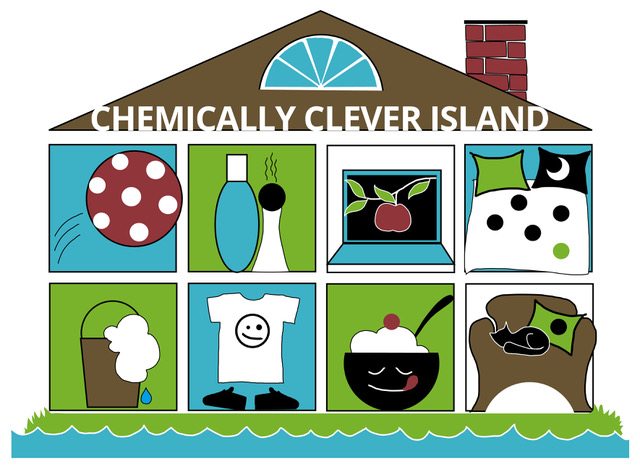Livingroom findings

Four typical items in the living room – and the chemicals hiding in them.
Tealights
A thousand and one small bright spots in the dark – how beautiful! In Sweden only, 300 millions of tealights go up in smoke every year. Mostly they are made of paraffin, the raw material being fossil oil. When they burn they contribute to increased emissions of carbon dioxide like any oil combustion, and toxic gases are emitted in the room. Tealights mae of 100 % stearin (much healthier and environmentally friendly) are not sold everywhere, but they exist. If customers ask for them, they will be more common. Swan labelled tealights with a refill system is a good option, as well as small cups of glass that can be used again and again. Otherwise the aluminium cups should be sorted out for recycling. Make sure to separate the little iron plate at the bottom from the aluminum cup, otherwise the aluminium will be sorted as iron as well.
The coach
The couch is nowadays an important piece of furniture – preferably posh and cosy, big as a battleship. But it might also be a real chemical monster. The foam rubber in the padding may contain remains of isocyanates from the manufacturing. Isocyanates are strongly asthma-inducing and allergenic, and in some cases carcinogenic. Since foam materials burn well and generate toxic gases, they are treated with flame retardants, most generously used in the 1970s, 80s and 90s. Organic solvents, surface treatment agents, antimolds, remains of pesticides, hardening accelerators and heavy metals like lead and mercury: the couch cocktail could be really heavy. Near-lether is, by the way, nothing but plastic with a lot of softeners. Real leather is usually tanned with crome, which is really toxic. Does your newly purchased sofa smell? Then it smells of chemicals. Ventilate, ventilate, ventilate!
Pot plants and flowers
Both pot plants and cut flowers are grown using chemicals. Cut flowers for export are grown in for instance South America, Africa and Asia, and the workers in the greenhouses are exposed to dozens of different chemicals. It is not uncommon that florists get skin disorders, ache and respiratory disorders by handling the heavily sprayed imported flowers. Some of the substances used are so toxic they are banned in our countries, like DDT and dieldrin. But we still use for instance carbamates, known to affect the nervous system in similar ways to organic phosphorus compounds. Sensitive persons can feel discomfort or respiratory distress. More and more people also get sensitive to fragrances, including fragrant flowers. On the other hand some pot plants are effective air fresheners by nature.
Carpets
A joy for the eye, a big foot warmer on a chilly floor or a nice soft playground. A carpet may serve many functions. But is it healthy? It depends on the material. Synthetic carpets are often cheaper to buy, but since plastic in all forms burn well they are often processed with some kind om flame retardant. If the underside is coated with soft plastic to lay steadily on the floor it might contain endocrine disruptors. And if the carpet effectively repels stains it might contain perfluorated substances that are hazardous and almost non-degradable. But then, you might actually be lucky. A wool carpet of good quality is naturally fire resistant, stain resistant, insulating and durable. And in a homespun rug all remains of chemicals are probably washed away since long.
